Interesting idea, hopefully one that may catch on. 4 major manufacturers of motorcycles, scooters, ATV, and Side-by-Sides have joined together into a consortium to standardized swappable batteries to power the Electric Vehicles. Down into the article is says the focus will initially be on micro-vehicles like SCOOTERS, which are highly popular in Asia & Europe, but less popular here in the US/North America. But if you look closely at the photos, you can see the batteries are also in a prototype of a Side-by-Side unit.
The key will be the batteries. If these are 1Wh weighing approximately 22 pounds batteries then I believe they are already behind the technology curve. But perhaps that is just for the baseline? Not a lot of details.
Everyone in North America knows the big Japanese player, but for those unfamiliar, Piaggio owns many different brands including Vespa and MotoGuzzi. KTM, the Austrian motorcycle giant also makes Husquavarna. The group of 4 should make a huge impact in the European market as well as the "free Asian" market but may have less influence in the socialist nations where cheap chinese scooters are prominent. Not really sure how much effect this will have on the Indian subcontinent, which is also a huge market for small motorcycles and scooters.
In North America Polaris motorsports and ZERO Motorcycles signed a joint technology sharing contract last year to co-develop battery power vehicles.
Article is from WebBikeWorld, there is a link at the bottom of the page to take you to the full article:
KTM, Honda, Piaggio, and Yamaha have officially signed an agreement that proves the four companies to be in full tilt toward creating a battery swapping system for the moto community.
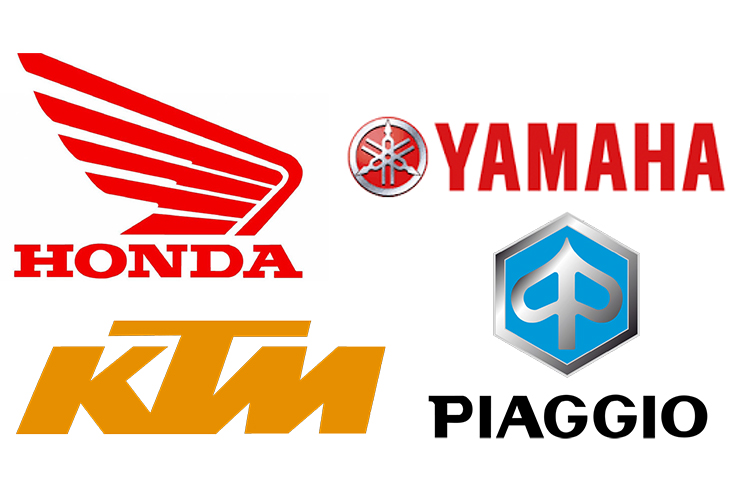
Together, they make up the founding members of the Swappable Batteries Motorcycle Consortium (SBMC) – a syndicate passionate about renewable energy and how it could impact the future of the current fossil fuel industry that we have come to know and love.
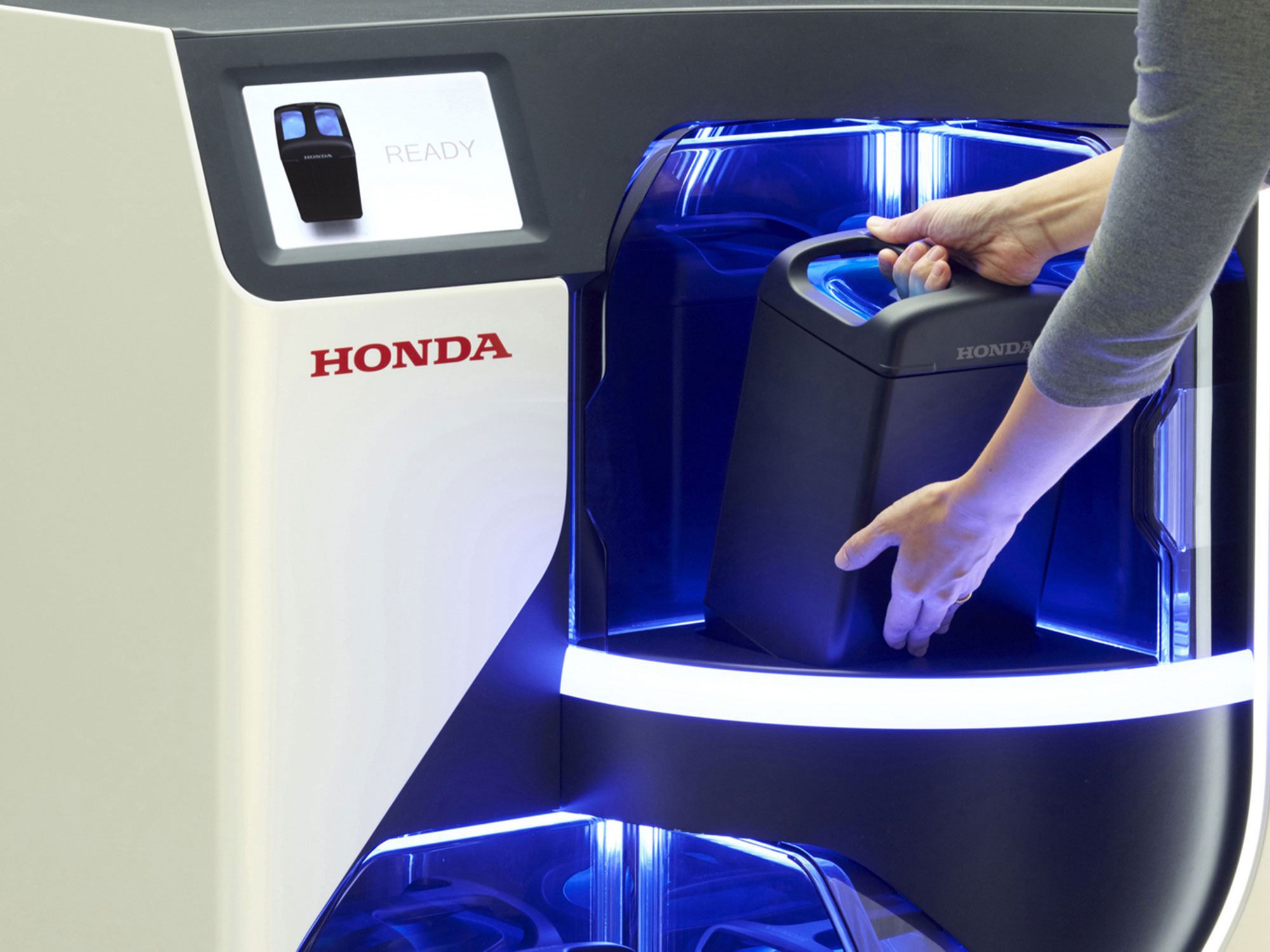
According to a recent KTM press release, the SBMC believes that the easiest way to get everybody out of the old age of gas-powered traditional vehicles (and into the world of full electrification) is by making batteries cheaper, recyclable, comparable, and more accessible to the consumer – a challenge in today’s limitations.
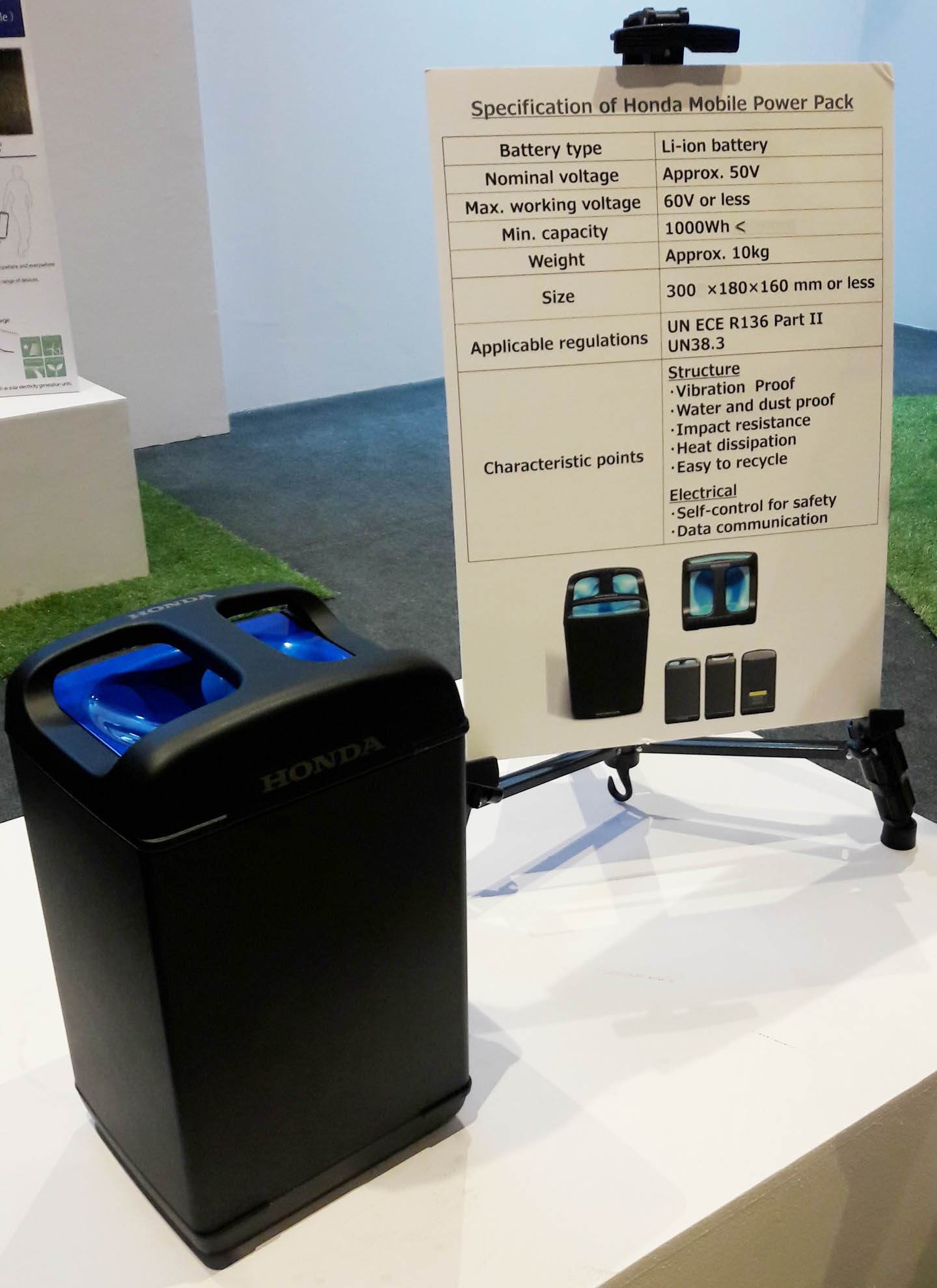
Their signing of the Letter of Intent happened on March first of this year, so the speed at which all four companies have signed the agreement proves that they plan on making headway with these challenges as quickly as possible.
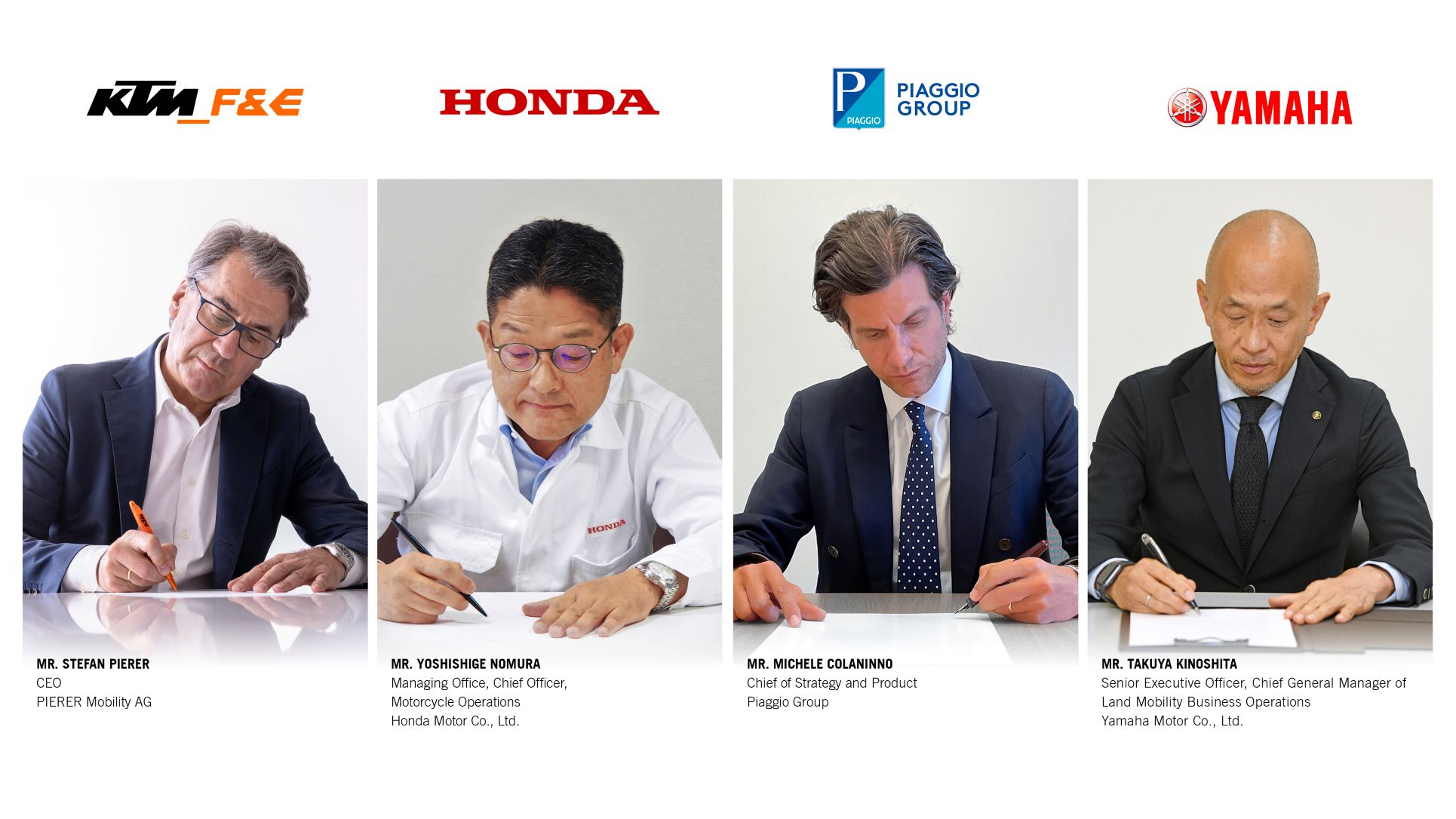 Representatives of KTM, Honda, Piaggio Group, and Yamaha (members of the SBMC) signing the agreement to begin the creation of a new battery-swapping system and charging network.
Representatives of KTM, Honda, Piaggio Group, and Yamaha (members of the SBMC) signing the agreement to begin the creation of a new battery-swapping system and charging network.
Altogether, the Consortium has four goals:
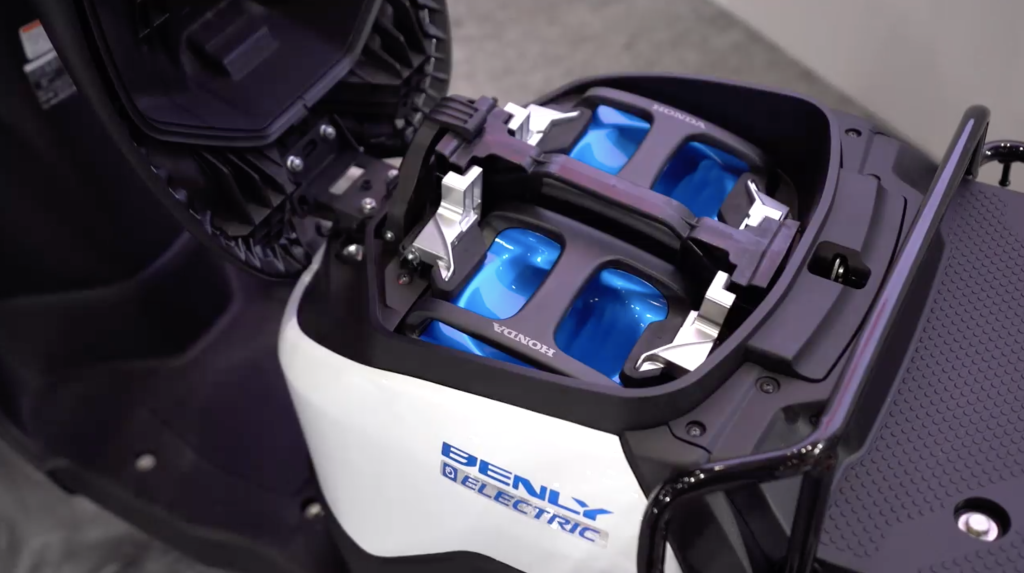
The focus will be placed for now on micro-mobility machines, or light electric vehicles (such as scooters, mopeds, tricycles, etc.), with the eventual long-term goal of branching out to larger models as technology continues to adapt.
This leap of faith is no lightweight matter, especially given that National, European and International standardization bodies will be looking closely to determine if the project continues to be in the best interest of both the community and the stakeholders invested in the system.
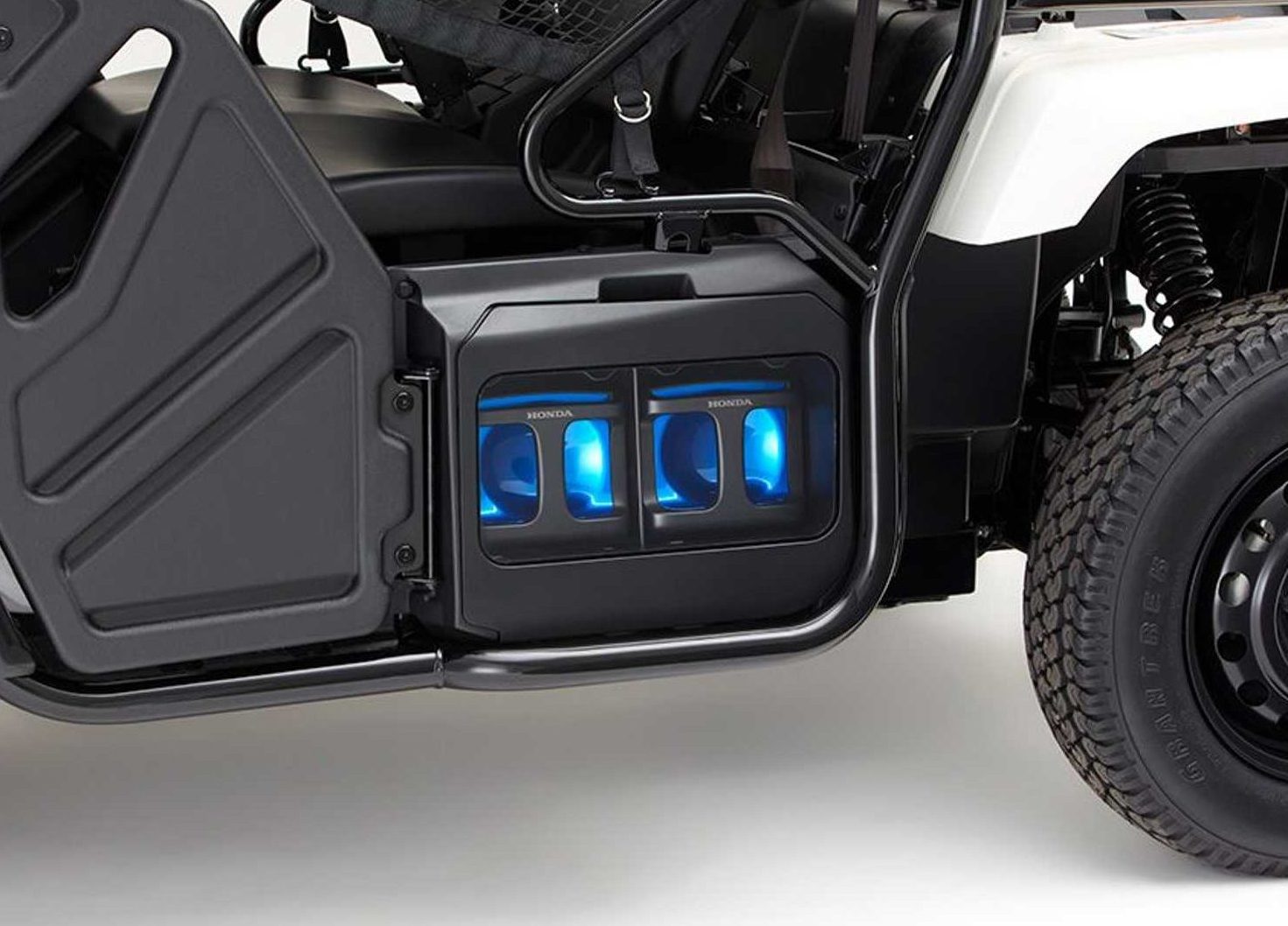
Availability of the system (and the charging network) will vary depending on the country, as SBMC is still in the process of ironing that out with their stakeholders; however, we can expect multiple updates in the coming year, as the creation phase has just been given the green light for full speed ahead with the signing of the final contract.

Stay tuned for updates, and as always – stay safe on the twisties!
The post KTM, Honda, Piaggio and Yamaha Begin Creation of Swappable Battery System appeared first on webBikeWorld.
Continue reading...
The key will be the batteries. If these are 1Wh weighing approximately 22 pounds batteries then I believe they are already behind the technology curve. But perhaps that is just for the baseline? Not a lot of details.
Everyone in North America knows the big Japanese player, but for those unfamiliar, Piaggio owns many different brands including Vespa and MotoGuzzi. KTM, the Austrian motorcycle giant also makes Husquavarna. The group of 4 should make a huge impact in the European market as well as the "free Asian" market but may have less influence in the socialist nations where cheap chinese scooters are prominent. Not really sure how much effect this will have on the Indian subcontinent, which is also a huge market for small motorcycles and scooters.
In North America Polaris motorsports and ZERO Motorcycles signed a joint technology sharing contract last year to co-develop battery power vehicles.
Article is from WebBikeWorld, there is a link at the bottom of the page to take you to the full article:
KTM, Honda, Piaggio and Yamaha Begin Creation of Swappable Battery System
KTM, Honda, Piaggio, and Yamaha have officially signed an agreement that proves the four companies to be in full tilt toward creating a battery swapping system for the moto community.
Together, they make up the founding members of the Swappable Batteries Motorcycle Consortium (SBMC) – a syndicate passionate about renewable energy and how it could impact the future of the current fossil fuel industry that we have come to know and love.

According to a recent KTM press release, the SBMC believes that the easiest way to get everybody out of the old age of gas-powered traditional vehicles (and into the world of full electrification) is by making batteries cheaper, recyclable, comparable, and more accessible to the consumer – a challenge in today’s limitations.

Their signing of the Letter of Intent happened on March first of this year, so the speed at which all four companies have signed the agreement proves that they plan on making headway with these challenges as quickly as possible.

Altogether, the Consortium has four goals:
- To Develop common technical specifications of the swappable battery systems, streamlining production.
- To Confirm common usage of the battery systems, ensuring that the project will be in high demand.
- To Make and promote the Consortium’s common specifications (as) a standard within European and International standardization bodies.
- To Expand the use of the Consortium’s common specification on a global scale.

The focus will be placed for now on micro-mobility machines, or light electric vehicles (such as scooters, mopeds, tricycles, etc.), with the eventual long-term goal of branching out to larger models as technology continues to adapt.
This leap of faith is no lightweight matter, especially given that National, European and International standardization bodies will be looking closely to determine if the project continues to be in the best interest of both the community and the stakeholders invested in the system.

Availability of the system (and the charging network) will vary depending on the country, as SBMC is still in the process of ironing that out with their stakeholders; however, we can expect multiple updates in the coming year, as the creation phase has just been given the green light for full speed ahead with the signing of the final contract.

Stay tuned for updates, and as always – stay safe on the twisties!
The post KTM, Honda, Piaggio and Yamaha Begin Creation of Swappable Battery System appeared first on webBikeWorld.
Continue reading...
